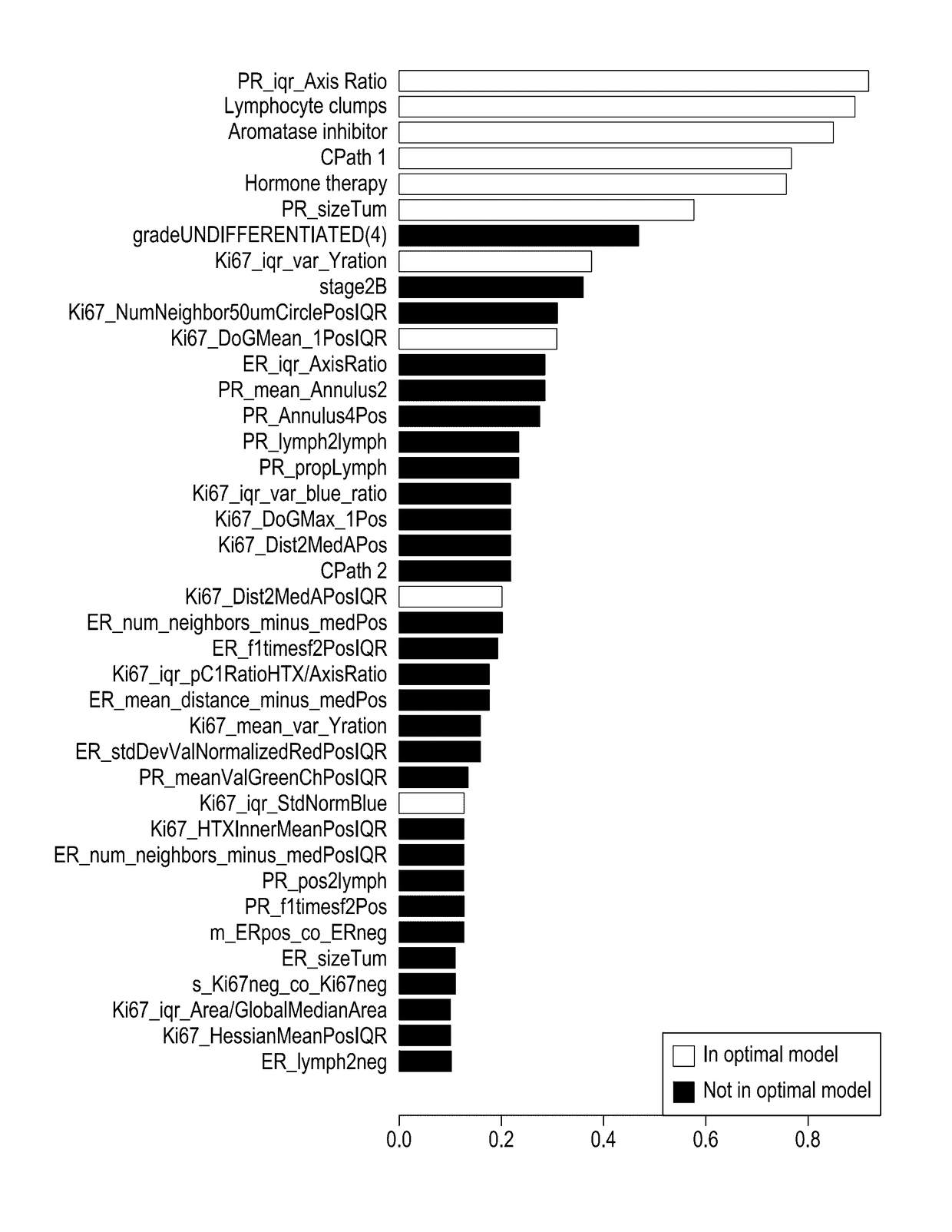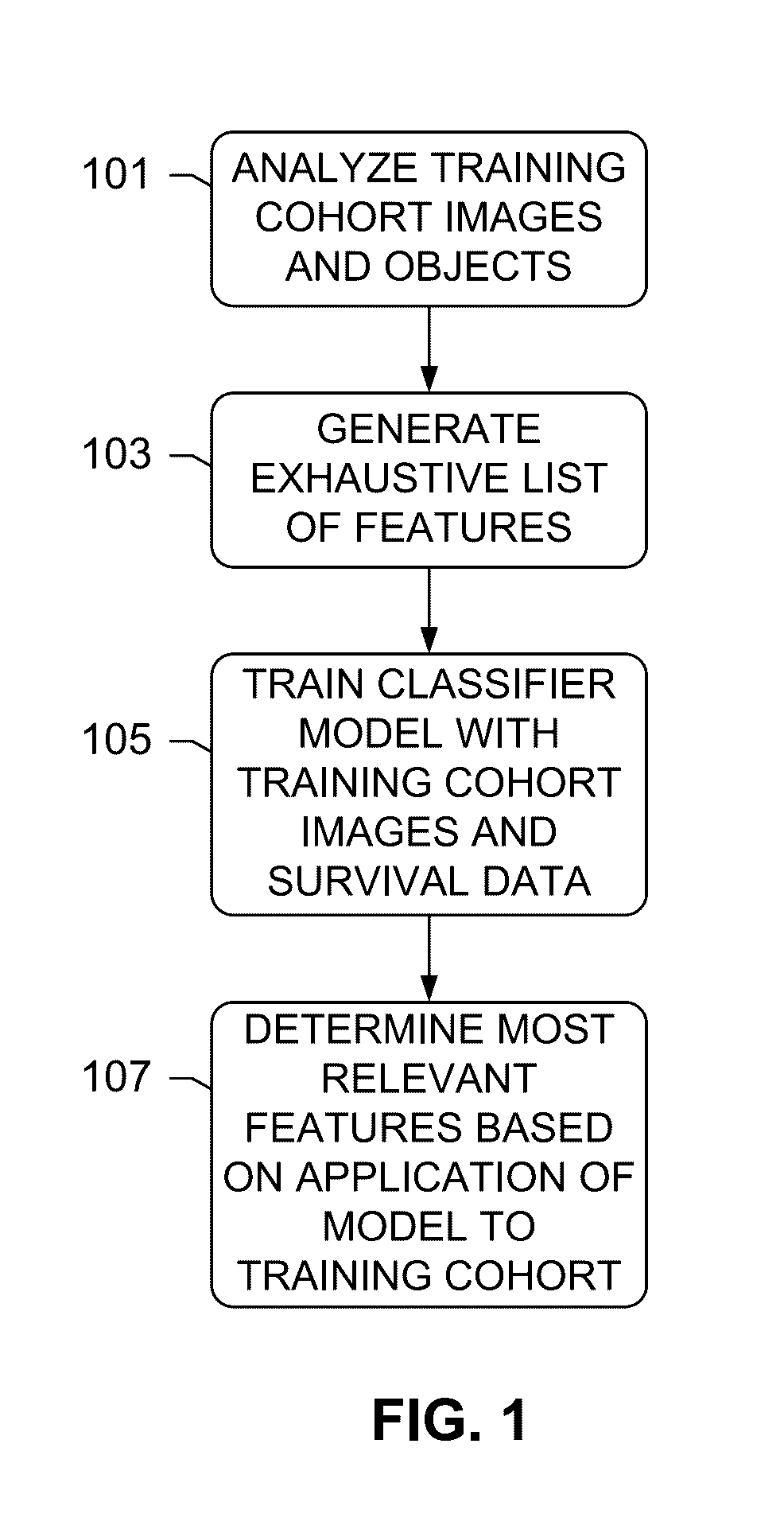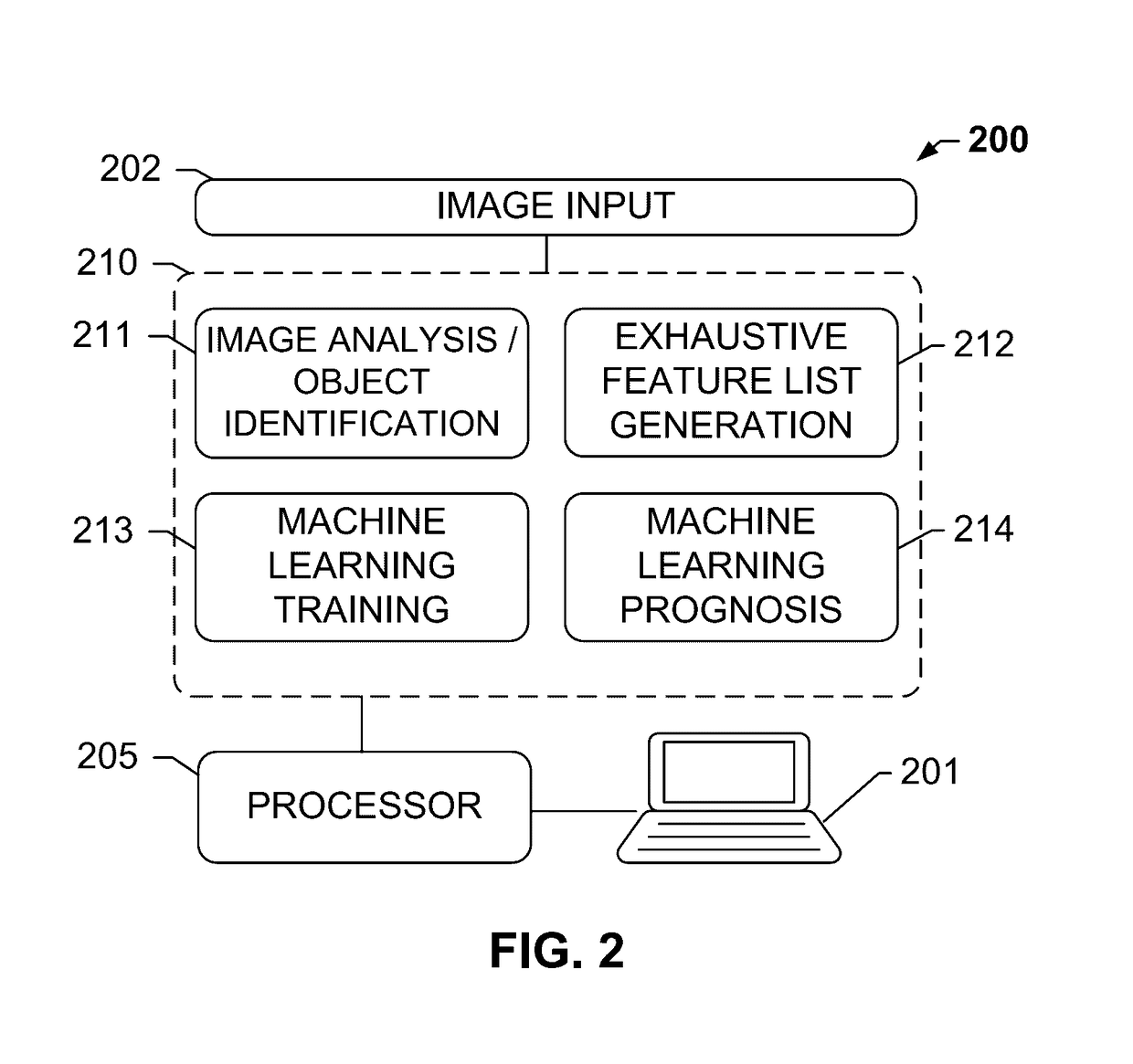Methods and systems for assessing risk of breast cancer recurrence
a breast cancer and risk assessment technology, applied in the field of methods and systems for assessing the risk of breast cancer recurrence, to achieve the effect of reducing unnecessary hardship and avoiding adverse side effects
- Summary
- Abstract
- Description
- Claims
- Application Information
AI Technical Summary
Benefits of technology
Problems solved by technology
Method used
Image
Examples
Embodiment Construction
[0034]Systems and methods disclosed herein relate to determining the risk of cancer recurrence. A classifier, such as a machine learning module, may be trained using a holistic integration of large amounts of prognostic feature information for one or more patients into a single comparative prognostic dataset. The large amounts of information may be analyzed from H&E and commonly used immunohistochemistry (IHC) slides, as well as other IHC slides such as immune panel slides, etc. A risk classification system may be trained using the large amounts of information from a cohort of training slides from several patients, along with clinical and survival data for said patients. For example, a machine-learning-based binary classifier in the risk classification system may be trained using a set of image features computed from a plurality of slides corresponding to several cancer patients whose clinical diagnostic and survival information is known and input into the system. The set of image f...
PUM
| Property | Measurement | Unit |
|---|---|---|
| thickness | aaaaa | aaaaa |
| thickness | aaaaa | aaaaa |
| time period | aaaaa | aaaaa |
Abstract
Description
Claims
Application Information
 Login to View More
Login to View More - R&D
- Intellectual Property
- Life Sciences
- Materials
- Tech Scout
- Unparalleled Data Quality
- Higher Quality Content
- 60% Fewer Hallucinations
Browse by: Latest US Patents, China's latest patents, Technical Efficacy Thesaurus, Application Domain, Technology Topic, Popular Technical Reports.
© 2025 PatSnap. All rights reserved.Legal|Privacy policy|Modern Slavery Act Transparency Statement|Sitemap|About US| Contact US: help@patsnap.com



